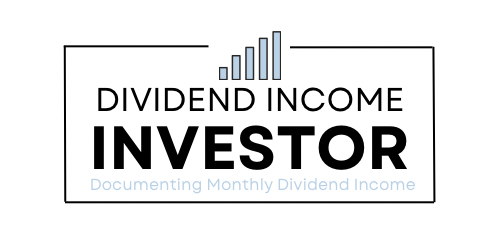One of the first stocks I ever bought was Apple.
Shortly after reading Rich Dad Poor Dad, I realized I needed to acquire assets.
Since I knew I could not afford real estate yet, I decided to invest in the stock market.
Naturally, I bought AAPL shares—I had an iPhone 4 and was working in retail selling iPhones at the time. I watched these phones fly off the shelves and I noticed their technology was advanced. The store I worked at was always out of stock. I was naturally a method investor.
This worked out well, because I earned an 80% return on one of my first investments. Of course, selling the shares ended up being one of my biggest investment mistakes ever. The shares went on to split and continued to rise over time. That 80% return would’ve been a lot higher if I never sold.
Forming My Investment Strategy
Anyways, I was hooked on investing so I turned to reading to learn more.
I started off with The Intelligent Investor by Ben Graham and that formed the foundation for how I pick stocks to this day. I became a value investor.
One of my first picks as a value investor was Corning (GLW) at $13.80 per share. They seemed to be undervalued at the time. Turns out this was true—the stock is worth more than $30 per share now. Nevertheless, I’m telling you this because I received my first dividend from Corning.
I would never be the same investor again once I saw that cash dividend hit my account. Dividend investing became a major part of my overall investment strategy.
The rest of the story is much shorter. I studied business marketing so I’ve always been interested in brands. As such, I focus on strong brands and companies I understand.
Not only am I looking for stocks that pay dividends, I’m looking for cigarette butts with strong brands that increase dividends annually.
Related Posts: How to become a Method Investor | Method Investing Explained
Why Dividend Investing, though?
First, I just want to say that I am not claiming that dividend investing is the best strategy for everyone.
Admittedly, the best strategy is likely investing in an S&P 500 Index fund.
You would’ve been up 13% YTD in that case as of March 18, 2019. Although I’m slightly outpacing the market this year so far, which is crazy btw, it is unlikely that I’ll beat the S&P 500 most years. There’s a good chance I’ll outpace on down years, but in up years a lot of dividend-centric portfolios underperform. You really have to be committed to the long term or dividend investing might not be the best strategy.
But in my case, I’m a value investor based on the principles of The Intelligent Investor, I focus on strong brands, companies I understand and I’m a dividend investor.
But what are the reasons to support my focus on dividend investing as a valid form of investing? Like who the hell am I to deviate from the advice of all the books I’ve read. They never recommended dividend investing specifically.
Related Posts: Books to become a better Investor and Money Manager
Here’s why…
40% of Total Market Returns have come from Dividends Since 1926
According to a recent video by CNBC (video shown above), dividend payments have accounted for 40% of total market returns since 1926. That’s a lot!
Of course, that does not mean that all dividend stocks are great investments. There are certainly some value traps out there.
But 40% over that long of a time frame is a pretty good indicator of the importance of dividend income.
Check out the video above for more on the lost art of Dividend Investing by CNBC.
Dividend Growth Investing
Another outstanding advantage of dividend income investing is dividend raises. In my opinion, it might be the most powerful component of dividend investing over the long term.
I have personally seen the power of dividend raises from holding shares such as Coca Cola and Enbridge more recently. It really adds up over time.
Simply put, an established company with solid cash flow will increase their dividend payment annually.
For a great example of how much dividend raises can eventually add to your income, I would recommend checking Engineering Dividend’s Dividend Income Update.
Of course, an index investor should receive their portion of the dividend raises as well. However, it is harder to predict the dividend raises like I do in my forward income projections now, and the average yield on an S&P 500 Index fund is lower than the average yield I earn from my portfolio.
Comfort and Predictable Cash Flow Growth
I worked as a mutual fund advisor earlier in my career. It was really an awesome experience and I worked with a great team.
Anyways, it’s a requirement to complete a proper risk tolerance assessment to make sure the investor is comfortable with market fluctuations.
Well, there are conservative or growth mutual funds, or income investors that choose rental properties. Why can’t dividend investing be viewed the same way? It’s just another investment strategy that some investors are more comfortable with after all.
I am comfortable with dividend investing because my dividend income is increasing regardless of what the market is doing. It’s like I got a raise. That predictable cash flow growth is one of my main reasons for dividend investing.
Living Within Limits | Withdrawals of Principal make me Reckless
Let me preface—I know the 4% rule works. The market will fluctuate but the overall average should be 7 to 10% per year, so your money is growing faster than the 4% you are spending. It works.
Personally, though, the feeling of withdrawing my balance makes me reckless with money. The only reason I know this is because I took a year off.
As soon as I sold one of my stocks to spend, I was done. I went into a different mode. I started to spend more and it felt good. And it seemed like I could do it whenever I wanted to the point of delusion.
In turn, I realized that it would be better for me to maintain the challenge of living within limits. I will live off dividend income, hopefully some small business/side hustle income and potentially work at a part time job. I will live within the limits of that cashflow and continue saving.
A Market Collapse Will Not Alter My FI Time Frame
In short, my dividend income will remain the same if the market corrects.
If I was to focus solely on value investing or index investing, a market correction could impact my time frame for financial independence. Of course, that’s if I’m trying to make it on a smaller amount of money.
For example, consider a scenario in which I have a portfolio worth $250,000 in 10 years time. Let’s say I plan to retire on that 10th year but the market corrects by a staggering 50%. I’m talking about the disaster of all disasters. I would only have $125,000 left! This disaster should only last for a brief period before the market rebounds. But it would be scarier to go through without monthly amounts of dividend income.
Based on the quality of most of the companies I own, dividend income would likely remain unchanged. Some of them might stop increasing dividends for a couple years.
In my humble opinion, dividend income investing is the best strategy for shorter time frames and potentially for smaller amounts of money. It’s predictable, measurable and passive. I could end up being incorrect on this, though.
However, there are still some tradeoffs to consider such as dividend cuts, or even a lack of dividend raises. Plus a personally selected stock portfolio could get hit even harder during a recession.
Because of this danger, I aim to find companies that paid dividends throughout the 2008 crisis. I make sure to review their dividend payment history for at least the last 10 years. An even longer history of dividend payments is preferred.
Building a Cash Flow Machine
One of the reasons why dividend investing is my main strategy is because of my quest to build a cash flow machine.
In short, I enjoy allocating capital. My dream is to have new capital to invest and allocate all the time. I want to wake up and move money around regularly.
Dividend investing allows me to act like a business owner. I get to choose a basket of companies that I support to receive cash payments from forever.
These dividend payments should end up being the base income that supports financial independence. I plan to earn income through dividend investing, blogging and whatever side hustles I can pick up.
Related Post: 9 Ways to Make Money Blogging in 2019
Concluding Thoughts
The 6 reasons above are my personal reasons why dividend investing is my main strategy.
Of course, I am not 100% dividend investing—I am also a value investor focused on strong brands and companies I know, and I will even speculate with 10 % or less of my portfolio’s value on cannabis stocks. I would say I am 80% dividend investor.
I also do plan to add index funds for diversification down the road. For example, I am most comfortable with financial, utilities, oil, cannabis and tech stocks. However, I am limited on other sectors so I will certainly consider index funds to fill in the gaps.
In addition, I want to mention that I am not claiming dividend investing is the better strategy over index investing. These are just my key reasons why I prefer dividend investing.
It’s individual because everyone is different. I read annual reports, news and stay in tune with the companies I’m holding. It’s a lot of work at times but I enjoy it. (I guess passive dividend investing is not so passive).
If you don’t want to do any work, index funds will likely provide superior returns for low cost. However, an investor in the S&P 500 would still have to be knowledgeable enough to stay the course during the down times.
In that case, there are actively managed mutual funds for those that want advice and possibly reassurance.
Moreover, the point I’m trying to make is that there some level of preference when it comes to investing.
Reaching financial independence through dividend investing would be the most fulfilling way for me.
I am not a licensed investment or tax adviser. All opinions are my own. This post contains advertisements by Google Adsense and Amazon affiliate links. All links in this post are internal links except one to a trusted blog.


 Make Saving Money Your Career
Make Saving Money Your Career
